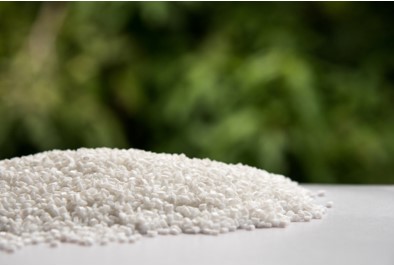- Molecular Formula: CH3(C6H10O2)m(C6H8O4)nCH3
- Molecular Formula: CH3(C6H10O2)m(C4H6O2)nCH3
- Molecular Formula: (C6H10O2)nC10H14O5
- Molecular Formula: (C6H10O2)nC12H18O5
- CAS Number: 24980-41-4
- Molecular Formula: (C6H10O2)n
- CAS Number: 36890-68-3
- Molecular Formula: (C6H10O2·C4H10O3)x
- CAS Number: 37625-56-2
- Molecular Formula: (C6H10O2)x(C6H10O2)x(C6H10O2)x C6H14O3
- CAS Number: 9051-88-1
- Molecular Formula: H[O(CH2)5CO]x(OCH2CH2)y[O(CH2)5CO]ZOH
Introduction
Caprolactone polymers are organic polymers with excellent solubility in aromatics, ketones and polar solvents. Among them, polycaprolactone (PCL) is a common caprolactone polymer, which is a kind of high molecular organic polymer formed by ring-opening polymerization of ε-caprolactone monomer under the action of metal anion complex catalyst.[1] The appearance of PCL is white solid powder, non-toxic, insoluble in water, and easily soluble in various polar organic solvents. PCL has good biocompatibility and biodegradability, and has good compatibility with organic polymers.[2] Caprolactone polymers can be synthesized by polycondensation and ring-opening polymerization, which are widely used due to their simplicity and low cost.

Characteristic
Caprolactone polymer has good thermal stability, the decomposition temperature is 350°C, and other polymers are generally around 250°C. In terms of material processing, caprolactone polymer has good flexibility and processing performance, which can be used for extrusion, injection molding, drawing, blown film, etc. In addition, the backbone of the caprolactone polymer contains unsaturated double bonds. Under thermal and radiation conditions, the unsaturated double bonds in the polymeric backbone undergo crosslinking, thereby exhibiting excellent mechanical properties, chemical resistance, and dimensional stability.
Application
Caprolactone polymers have been widely used in pharmaceutical formulations. As a raw material for pharmaceutical preparations, caprolactone polymers have the functions of reducing drug toxicity, preventing drug inactivation and targeting drug delivery. In addition, caprolactone polymers are also used in controlled-release drug carriers, matrixes for cells and tissues.
Caprolactone polymers are transparent, low temperature resistant and biodegradable. The mulch film prepared by caprolactone polymer has been widely used in agricultural production such as rice seedling cultivation, vegetable cultivation, sweet potato and cotton seedling cultivation. In addition, the caprolactone polymer has excellent plasticity at low temperature, which can maintain the biological activity of the coating material to a certain extent. Therefore, they are useful in agricultural seed coatings and slow-release fertilizers.
Caprolactone polymers are used as spraying materials and surface coatings for automotive primers, as well as solvents for various building materials and modifiers for latex paints. The use of caprolactone polymer in coatings can not only improve the toughness of the paint film, but also improve low-temperature characteristics and reactivity, and increase the crosslink density between coatings.
If you are interested in our caprolactone polymers, please contact us immediately!
References
- Yang, Y. et al. Advances in application research of polycaprolactone. New Chemical Materials. 2011, 39(12): 13-15.
- Duan, H.Y. et al. The in vivo characterization of electrospun heparin-bonded polycaprolactone in small-diameter vascular reconstruction. Vascular. 2015, 23(4): 358-365.




























